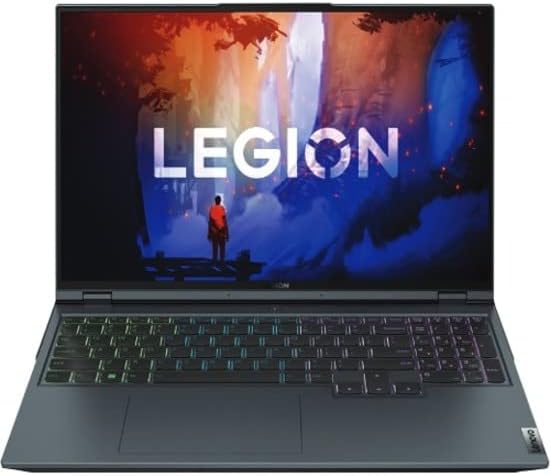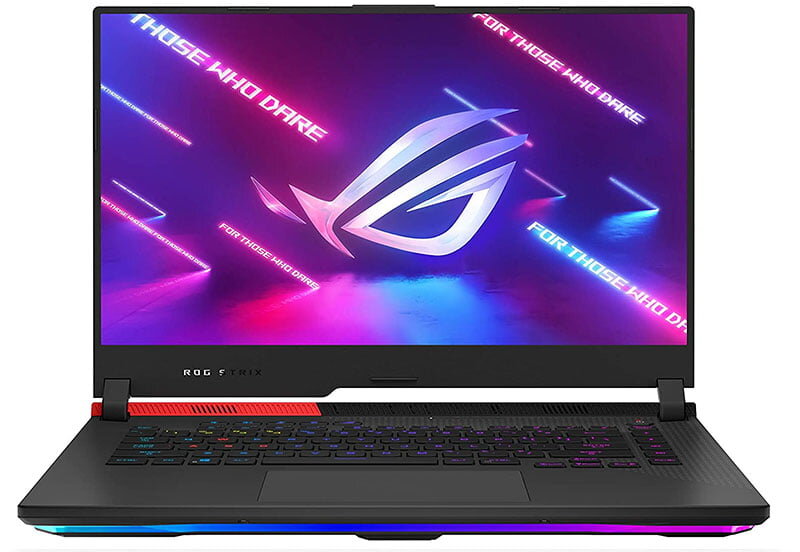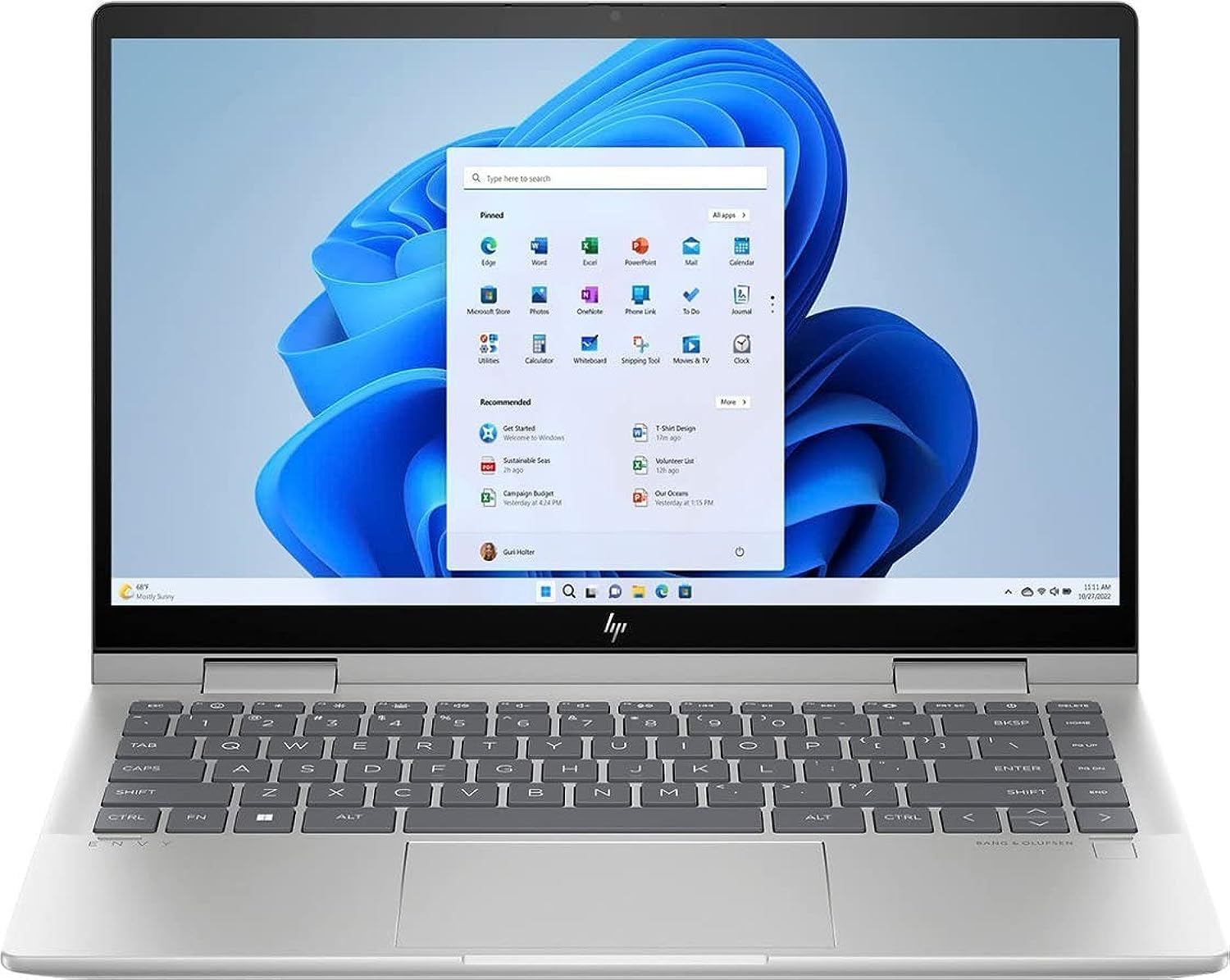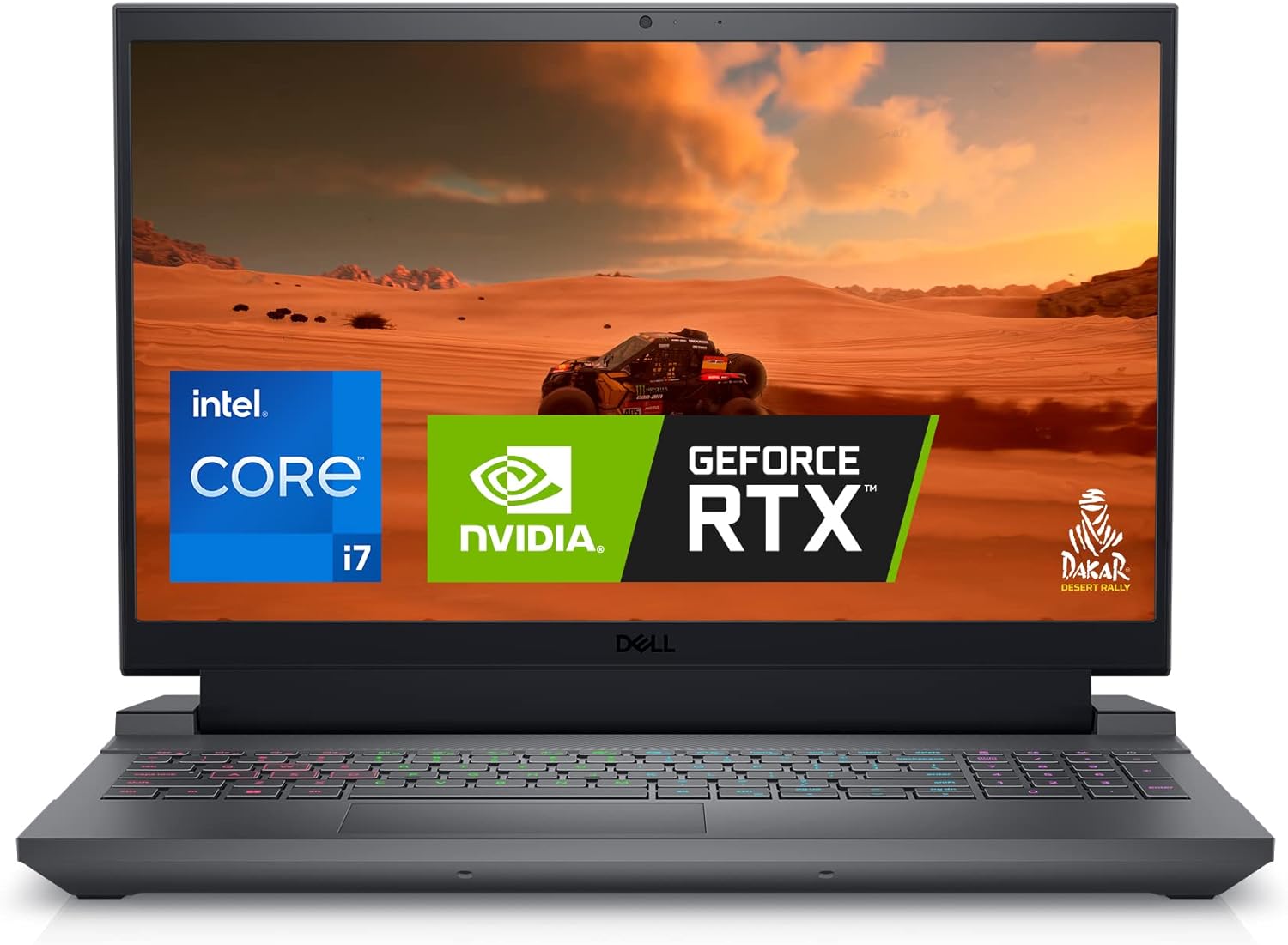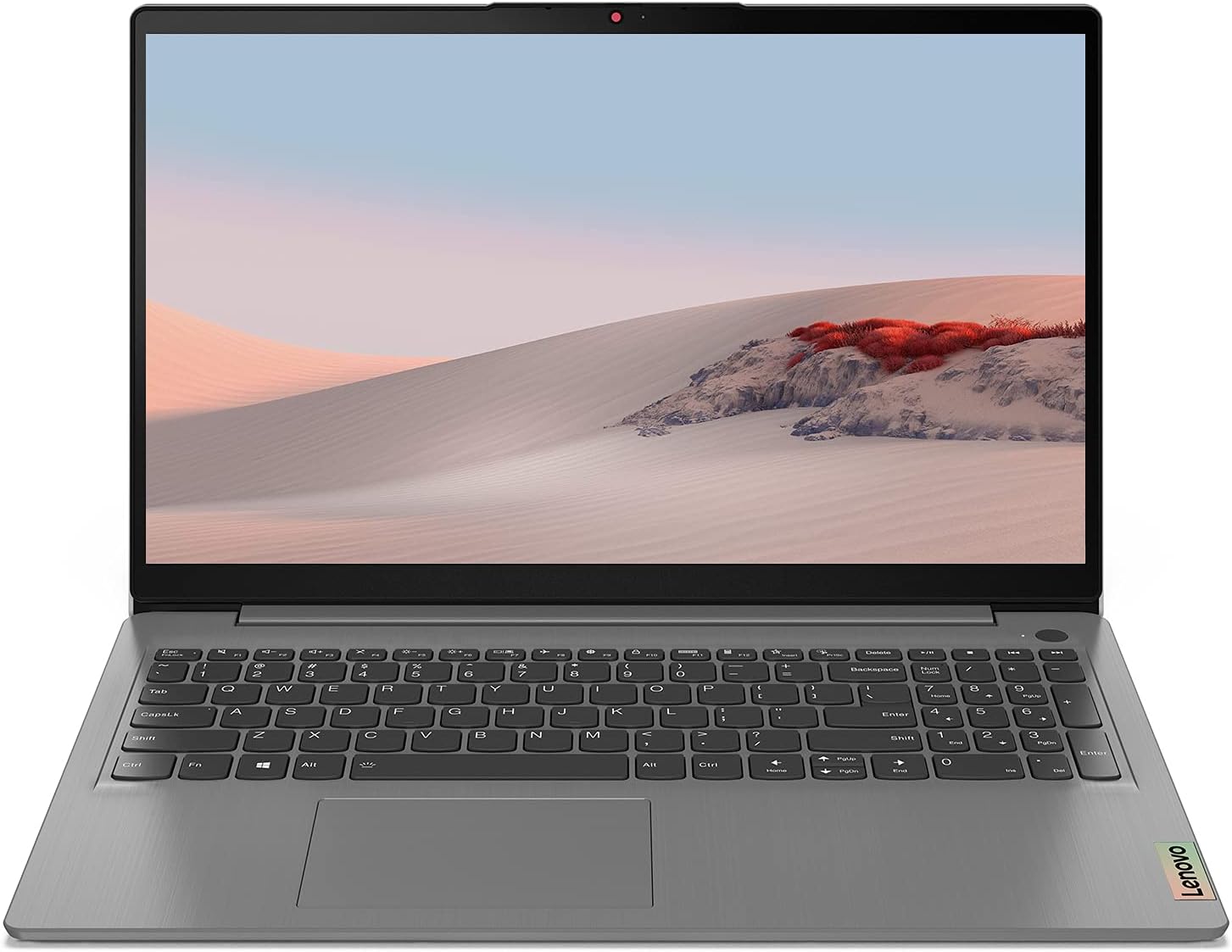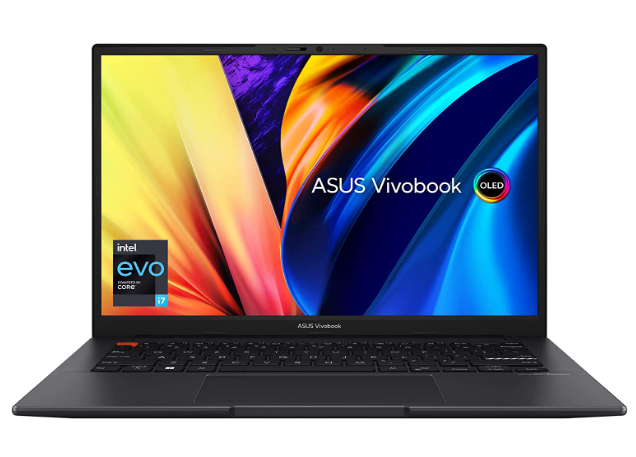Have you ever wondered what powers the intricate world of geographic information systems (GIS)? Behind every detailed map analysis and spatial data visualization lies a powerful tool: the laptop. Choosing the best laptop for GIS tasks is not just about going for the latest model; it’s about finding a robust machine that can handle complex data without breaking a sweat. In this article, we delve into the essential features that make a laptop stand out for GIS professionals and enthusiasts alike.
From processing speed to graphics capabilities and battery life, we’ll guide you through the top contenders that promise to boost your productivity and enhance your mapping experience. Whether you’re a seasoned geospatial analyst or just starting out, get ready to discover the laptops that can take your GIS projects to new heights.
Image
Laptop
Rating
Button
List of 10 Best Laptops for GIS:
1. Lenovo Legion 5 Pro
Experience top-tier performance with the Lenovo Legion 5 Pro, featuring a Ryzen 7 processor, 16GB RAM, 1TB SSD, and RTX 3070 Ti graphics for advanced GIS tasks.
Key Features:
The Lenovo Legion 5 Pro is a powerhouse, perfect for GIS professionals. Its AMD Ryzen 7 processor and RTX 3070 Ti graphics card deliver exceptional performance for data-intensive tasks. The 16GB of RAM ensures smooth multitasking, while the 1TB SSD offers ample and fast storage for large datasets. The high-resolution QHD display with a 165Hz refresh rate is not only great for gaming but also offers crisp and clear visuals for mapping and spatial analysis.
Buyers on Amazon rave about the Legion 5 Pro’s performance, especially appreciating its gaming capabilities, which translate well into handling demanding GIS software. The high refresh rate screen and the overall build quality receive high marks, although some users have mentioned issues, which seem to be isolated cases rather than widespread problems.
PROS
CONS
2. Dell XPS 15
The Dell XPS 15 is a sleek powerhouse with a Core i7 processor, 32GB RAM, 2TB SSD, and RTX 3050 graphics, ideal for professional GIS applications.
Key Features:
The Dell XPS 15 is a premium laptop that’s well-suited for GIS professionals who need a balance of performance and portability. The Intel Core i7 processor combined with 32GB of RAM makes it a beast for running complex spatial analyses. The 2TB SSD provides plenty of space for storing large geospatial databases, and the RTX 3050 ensures smooth rendering of maps and 3D terrain models. Its FHD+ display offers excellent color accuracy for those who also need to do graphical work.
Amazon customers who purchased the Dell XPS 15 appreciate its robust performance, stunning display, and premium build quality. The large amount of RAM and storage space is frequently highlighted in positive reviews. However, some refurbished units may have varying levels of quality, so it’s important to check the seller’s reputation and warranty options.
PROS
CONS
3. Acer Nitro 5
Acer Nitro 5 is a powerhouse for GIS tasks, offering robust performance with its Ryzen 7 5800H processor, ample 16GB DDR4 RAM, and dedicated NVIDIA RTX 3060 graphics.
Key Features:
You should consider the Acer Nitro 5 for your GIS work because it combines high-performance components that are crucial for data-intensive tasks. The AMD Octa-Core Ryzen 7 5800H processor provides the computational power needed for processing large datasets, while the 16GB of DDR4 RAM ensures smooth multitasking. The 1TB SSD offers ample and fast storage for your spatial databases, and the RTX 3060 GPU accelerates rendering of complex maps and spatial analyses.
Reviewers on Amazon and other platforms have praised the Acer Nitro 5 for its crisp QHD display and competitive performance for the price. Users appreciate the roomy SSD and find the laptop to be a great value in the gaming laptop segment, which translates well to GIS applications. However, some have noted that the heavy and bulky case, as well as a flimsy display lid, could be drawbacks.
PROS
CONS
4. ASUS ROG Strix G15
ASUS ROG Strix G15 excels in GIS tasks with its latest AMD Ryzen 7 6800HS CPU, 8GB DDR5 RAM, and GeForce RTX™ 3050 GPU, ensuring smooth and efficient data processing.
Key Features:
The ASUS ROG Strix G15 is a top pick for GIS professionals who need a laptop that can handle demanding spatial analysis and mapping tasks. The AMD Ryzen 7 6800HS CPU and NVIDIA GeForce RTX 3050 GPU provide the necessary power for running GIS software efficiently. The 16GB of DDR5 RAM is ideal for handling large datasets, and the 512TB PCie SSD storage you have plenty of space for your projects.
According to reviews, the ASUS ROG Strix G15 offers solid performance and a sturdy build, making it a reliable choice for GIS work. Users have highlighted the laptop’s excellent cooling system and high refresh rate display as key benefits. However, some reviewers have pointed out that the screen could be brighter and that the absence of a webcam might be a limitation for some users.
PROS
CONS
5. Lenovo ThinkPad T15
Discover the Lenovo ThinkPad T15, a powerhouse for GIS professionals. With top-tier Intel Core i7 processing, ample RAM, and solid-state storage, it’s built for speed and efficiency. Its dedicated graphics ensure smooth mapping and analysis, making it the go-to choice for GIS experts.
Key Features:
If you’re diving into the world of Geographic Information Systems (GIS), the Lenovo ThinkPad T15 is tailored for you. Its Intel Core i7 processor ensures that heavy GIS software runs smoothly, without any lag, making your data analysis and mapping tasks more efficient. The 16GB of RAM is perfect for multitasking and handling large datasets, which is common in GIS work.
Plus, the solid-state drive offers quick boot times and fast access to your files and applications. Whether you’re working with complex spatial data or rendering detailed maps, the ThinkPad T15’s graphics options are up to the task, providing clear and crisp visuals. This laptop is not just a tool; it’s a companion that enhances your productivity and supports your professional growth in the GIS field.
Buyers on Amazon have praised the Lenovo ThinkPad T15 for its robust performance and reliability, particularly noting its speed and the quality of its build. Many appreciate its keyboard comfort and the clarity of its display, which is crucial for GIS work that demands precision and attention to detail. Some users have highlighted the laptop’s ability to handle multiple applications simultaneously without any performance dip, a testament to its powerful specs. However, it’s important to note that individual experiences may vary, and it’s wise to consider the specific needs of your GIS projects when making your decision.
PROS
CONS
6. HP Envy
Experience seamless GIS processing with the HP Envy’s robust i7 processor, 16GB RAM, and 1TB SSD, all encased in a sleek design.
The HP Envy is a powerhouse wrapped in elegance. Its 11th Gen Intel Core i7 processor ensures that GIS software runs smoothly, and with 16GB of RAM, multitasking is a breeze. The 1TB SSD offers ample storage for large datasets, and the integrated Intel Iris Xe Graphics can handle GIS visualization tasks efficiently. Its sleek design and full HD touch screen make it a joy to use both in the office and in the field.
Buyers on Amazon rave about the HP Envy’s speed and performance, especially praising its ability to handle multiple tasks without lag. Users appreciate the attractive design and report that the battery life is sufficient for a day’s work. The consensus is that it’s a reliable machine that offers great value for its price.
PROS
CONS
7. Dell G15
Dominate GIS tasks with the Dell G15 high-performance i7 processor, dedicated RTX 3050 graphics, and fast DDR5 memory
Key Features:
The Dell G Series is tailored for performance. The 13th Gen Intel Core i7 processor and NVIDIA GeForce RTX 3050 graphics card make it an excellent choice for GIS professionals who need extra graphical horsepower. The 8GB of DDR5 RAM, while less than the HP Envy, is faster and upgradable, and the 512GB SSD provides quick access to your data. This laptop is designed with gaming in mind, which translates to robust build quality and cooling systems that benefit GIS workloads.
According to reviews, the Dell G15 impresses with its gaming capabilities, which bodes well for resource-intensive GIS software. Users are satisfied with the display quality and the overall performance. However, some note that the laptop is on the heavier side, which might be a consideration if portability is a priority.
PROS
CONS
8. Lenovo IdeaPad 15.6 FHD
Experience top-notch performance and portability with the Lenovo IdeaPad 15.6 FHD. Perfect for GIS professionals and enthusiasts seeking a blend of power and mobility.
Key Features:
The Lenovo IdeaPad 15.6 FHD stands out for its exceptional blend of performance and portability, making it an ideal choice for GIS professionals. The AMD Ryzen 5 5500U processor ensures smooth and efficient handling of GIS software, while the generous 20GB DDR4 RAM allows for seamless multitasking. The 512GB PCIe SSD offers ample storage for large datasets, and the integrated AMD Radeon Graphics deliver clear and detailed visuals. Its lightweight design and robust build quality make it perfect for both office and fieldwork.
Customers have praised the Lenovo IdeaPad 15.6 FHD for its speed, lightweight design, and overall quality. It’s highlighted as a great product for home use and schoolwork, with a particularly satisfying keyboard. However, opinions on the touch screen and screen quality vary among users. Despite these mixed reviews, the laptop’s performance and portability receive consistent commendation.
PROS
CONS
9. ASUS VivoBook S 15
The ASUS VivoBook S 15 is a sleek laptop with a 15.6” FHD OLED display, powered by a 12th Gen Intel Core i5 processor, 8GB RAM, and a 512GB SSD, ideal for GIS professionals seeking performance and portability.
Key Features:
If you’re a GIS professional, the ASUS VivoBook S 15 is a compelling choice for several reasons. Its 12th Gen Intel Core i5 processor delivers robust performance for demanding GIS applications. The 8GB DDR4 RAM ensures smooth multitasking, while the 512GB SSD offers quick data access and ample storage for large datasets. The FHD OLED display provides vivid colors and sharp details, which is crucial when working with intricate maps and spatial data. Moreover, the Intel Iris Xe graphics offer enhanced visual capabilities for rendering and analyzing geospatial information.
Buyers on Amazon appreciate the VivoBook S 15 for its fast performance, lightweight design, and vibrant OLED screen. Users have reported that it handles GIS software efficiently, making it a reliable tool for their professional needs. The long battery life and fast charging are also frequently mentioned, allowing users to work on the go without frequent interruptions.
PROS
CONS
10. Dell Inspiron 14 7000
Experience top-tier performance with the Dell Inspiron 14 7000, featuring a powerful AMD Ryzen 7 processor, 32GB DDR4 RAM, and a 2TB SSD for blazing-fast speeds and ample storage. Perfect for GIS professionals.
Key Features:
The Dell Inspiron 14 7000 is a powerhouse designed for professionals who demand speed and efficiency in their work. Its AMD Ryzen 7 processor ensures that GIS applications run smoothly, allowing for complex data analysis without any lag. The massive 32GB DDR4 RAM further enhances multitasking capabilities, making it easy to switch between tasks without performance drops. With a 2TB SSD, you have more than enough space to store large GIS datasets and projects, ensuring that you’re always ready for any task. Additionally, the AMD Radeon Graphics provide crisp and clear visuals, enhancing your mapping and spatial analysis work.
Buyers on Amazon have praised the Dell Inspiron 14 7000 for its exceptional speed and performance, highlighting its ability to run all apps and software smoothly. Users appreciate its lightweight design, making it convenient for professionals on the go. The ample storage is also a significant plus, allowing users to store extensive research and projects without worrying about space.
PROS
CONS
Conclusion:
In summary, the quest for the best laptops for GIS is a journey through a landscape of high-performance processors, crisp displays, and enduring battery life. We’ve explored the key specifications that matter most to GIS professionals, ensuring that you have the information needed to make an informed decision. With the insights from this article, you’re now equipped to select a laptop that not only meets your GIS requirements but also offers a seamless and efficient workflow. So, go ahead and choose the companion that will transform your geospatial projects into masterpieces of precision and reliability.


